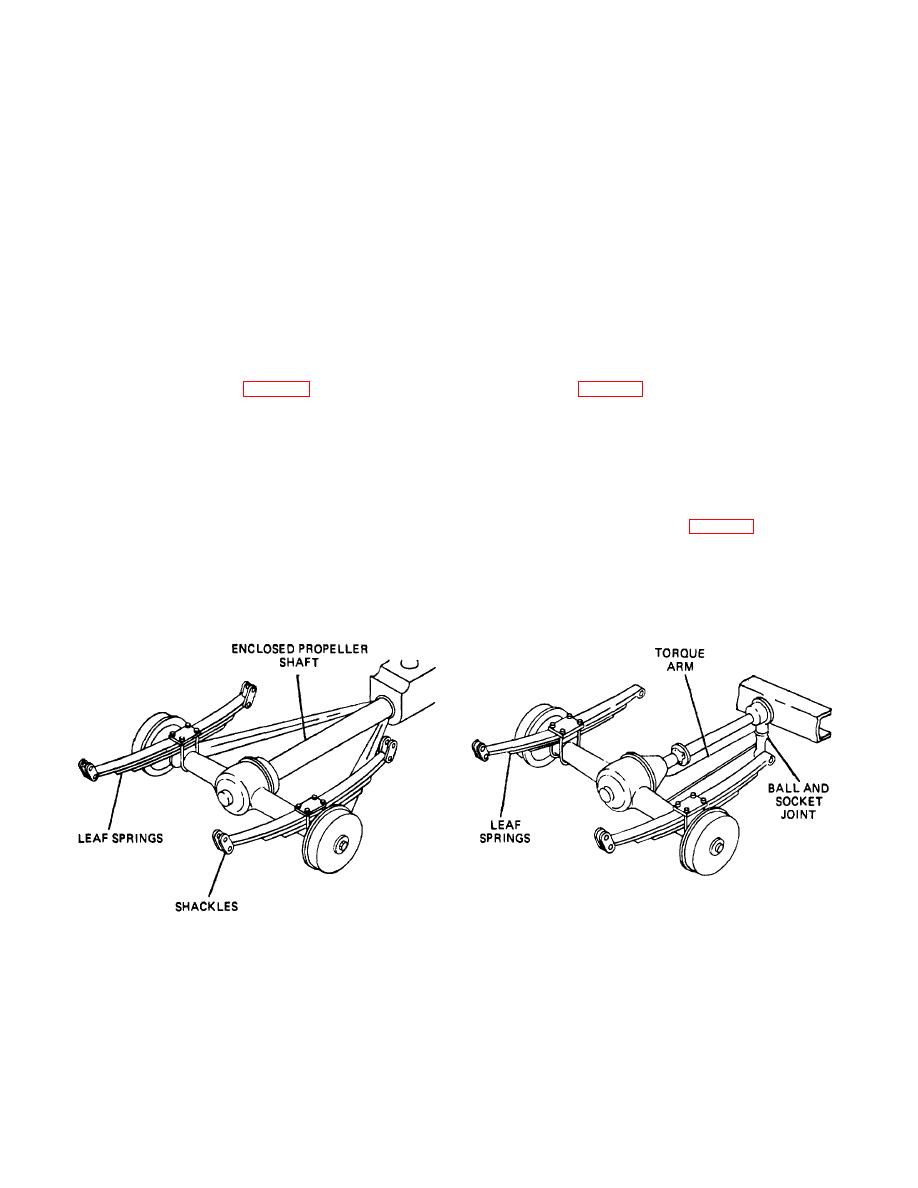
| Tweet |

Custom Search
|
|

|
||
 TM 9-8000
poor riding qualities, thereby limiting vehicle mobility.
The suspension springs are shackled at both ends.
However, this drive system is in extensive use because
In a torque tube drive, both the torque reaction and the
of simplicity, low cost, and ruggedness.
driving thrust are resisted by the torque tube. Because
the suspension springs do not resist the torque reaction
An advantage of the Hotchkiss drive is that the flexible
and drive thrust, they can be made more flexible and
connection between axle and frame throws less strain on
give better riding qualities than a Hotchkiss drive.
the driving mechanism than do other types. When
sudden loads are applied, as in suddenly engaging the
In a torque tube drive, the driving thrust is applied to the
clutch, the axle housing can rock around the drive shaft
frame at the engine mounting or at a frame
slightly, which cushions the shock transmitted through
crossmember. In a torque rod or Hotchkiss drive, the
the driving mechanism and reduces the load between
force is applied at the suspension springs. The torque
the teeth of the final driving mechanism.
tube drive seldom is used in contemporary designs.
b. The torque tube drive, while not common on
c. The torque arm drive rarely is used. It consists
heavy military vehicles, is used on a limited number of
of a solid or tubular arm, rigidly connected to the driving
passenger and light commercial vehicles. In this type of
axle housing at its rear end and to a frame crossmem-
drive, the propeller shaft (drive shaft) is housed in a steel
ber, through a ball-and-socket Joint or spring bracket, at
tube called the torque tube (fig. 30-5). The rear end of
its front end (fig. 30-6). An open propeller shaft is used
the torque tube is bolted rigidly to the rear axle housing
on a torque arm drive. The torque arm drive is similar to
by means of a flange. Its front end is connected to the
the torque tube drive. The main difference is that it uses
transmission or a frame crossmember by means of a
an open propeller shaft running parallel to the torque
ball-and-socket joint. One universal Joint is used in the
arm, instead of a drive shaft housed within a torque tube.
propeller shaft and is located at the ball-and-socket Joint
d. Coil Spring and Control Rod Drive. This type of
of the torque tube. A slip Joint is placed in the propeller
shaft to take up end play arising when the driven axle
live axle suspension commonly is used in modern
moves up and down. A center bearing generally is used
vehicles. In this configuration (fig. 30-7), the coil springs
to support the drive shaft in the torque tube.
are placed between the axle housing and the frame.
Their sole purpose is to support the weight of the vehicle.
Two suspension system radius rods are used to connect
All torque reaction due to accelerating and braking and
the outboard ends of the axle housing with the
all
transmission end of the torque tube. This will keep the
axle housing alined at right angles to the torque tube.
Figure 30-5. Torque Tube Drive.
Figure 30-6. Torque Arm Drive.
TA233802
30-4
|
||
 |
||